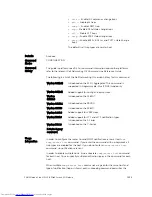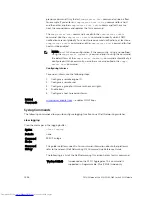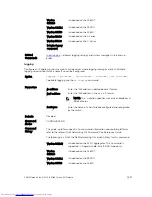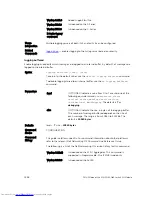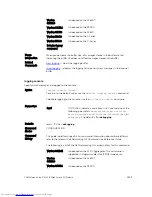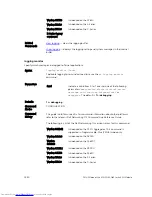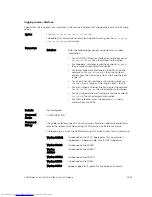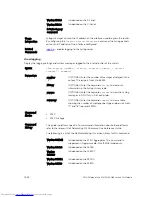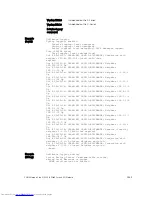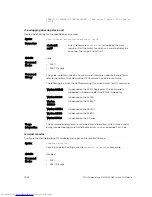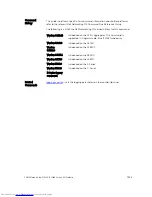
previous command. Only the last
snmp-server host
command will be in effect.
For example, if you enter an
snmp-server host inform
command for a host
and then enter another
snmp-server host inform
command for the same
host, the second command replaces the first command.
The
snmp-server host
command is used with the
snmp-server enable
command. Use the
snmp-server enable
command to specify which SNMP
notifications are sent globally. For a host to receive most notifications, at least one
snmp-server enable
command and the
snmp-server host
command for that
host must be enabled.
NOTE: For v1 / v2c trap configuration, if the community-string is not defined
using the
snmp-server community
command prior to using this command,
the default form of the
snmp-server community
command automatically is
configured with the community-name the same as specified in the
snmp-
server host
command.
Configuring Informs
To send an inform, use the following steps:
1.
Configure a remote engine ID.
2.
Configure a remote user.
3.
Configure a group for this user with access rights.
4.
Enable traps.
5.
Configure a host to receive informs.
Related
Commands
snmp-server enable traps
— enables SNMP traps.
Syslog Commands
The following commands allow you to configure logging functions on all Dell Networking switches.
clear logging
Clear the messages in the logging buffer.
Syntax
clear logging
Defaults
none
Command
Modes
EXEC Privilege
Command
History
This guide is platform-specific. For command information about other platforms,
refer to the relevant
Dell Networking OS Command Line Reference Guide
.
The following is a list of the Dell Networking OS version history for this command.
Version 9.2(0.0)
Introduced on the M I/O Aggregator. This command is
supported in Programmable-Mux (PMUX) mode only.
1536
PMUX Mode of the MXL 10/40GbE Switch I/O Module














